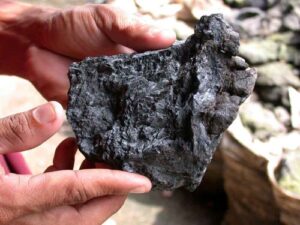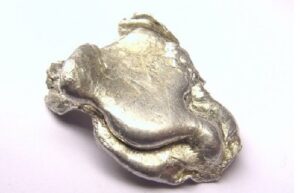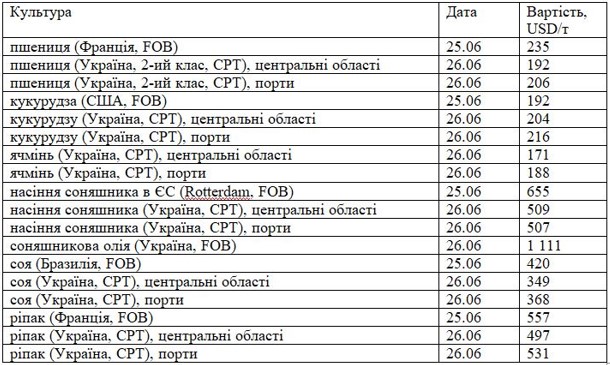
In January-August of this year, Ukraine reduced manganese ore exports by 82.2% compared to the same period last year, to 8,014 thousand tons, but in August, it stepped up deliveries.
According to statistics released by the State Customs Service (SCS), while deliveries in the first seven months of 2025 amounted to 2,977 thousand tons, exports more than doubled in August, when 5,037 thousand tons were exported.
In monetary terms, exports for the first eight months of 2025 fell by 79.8% compared to the same period in 2024, to $1.329 million.
The main exports were to Slovakia (97.89% of shipments in monetary terms) and Poland (2.11%).
There were no imports of manganese ore during this period.
As reported, in January 2024, Ukraine exported 44,903 thousand tons of manganese ore worth $6.563 million to the US, breaking a two-year absence of supplies to foreign markets. In February-December 2024, there were no exports of manganese ore.
At the same time, for the whole of 2024, the country imported 84,293 thousand tons worth $18.302 million from Ghana (98.85%), Brazil (0.99%), and Belgium (0.11%). There were no imports in October-November.
Ukraine did not export manganese ore in 2022 and 2023, and in 2021 it exported 770 tons worth $89 thousand.
In addition, it was reported that the Pokrovsky Mining and Processing Plant (PGZK, formerly Ordzhonikidze Mining and Processing Plant) and the Marganetsky Mining and Processing Plant (MGZK, both in Dnipropetrovsk region), which are part of the Privat Group, stopped mining and processing raw manganese ore in late October-early November 2023, while NZF and ZZF stopped smelting ferroalloys. In the summer of 2024, ferroalloy plants resumed production at a minimum level.
PGZK and MGZK did not produce any products in 2024, while in 2023, PGZK produced 160.31 thousand tons of manganese concentrate, and MGZK was idle.
In Ukraine, manganese ore is mined and enriched by the Pokrovsky and Marganets mining and enrichment plants.
The consumers of manganese ore are ferroalloy enterprises.

In the first eight months of 2025, Ukraine increased imports of tin and tin products by 42.9% to $2.632 million (in August – $294,000).
Exports fell almost threefold to $104,000 compared to $344,000 last year (in August – $3,000).
Tin is mainly used as a safe, non-toxic, corrosion-resistant coating in its pure form or in alloys with other metals. The main industrial applications of tin are in white tin (tinned iron) for the manufacture of food containers, in solders for electronics, in domestic piping, in bearing alloys, and in coatings of tin and its alloys. The most important tin alloy is bronze (with copper).

Ukraine exported 580,000 tons of sugar during the 2024-2025 marketing year (August-September), which is 32% of the country’s production, which is 16% less than in the previous marketing year, when 692,000 tons were supplied to foreign markets, according to the National Association of Sugar Producers of Ukraine “Ukrtsukor.”
The industry association noted that of the total exports in 2024/2025, 17% went to EU countries and 83% to the global market. Last season, the ratio was 77% to the EU and 23% to the global market.
The main importers of Ukrainian sugar in 2024/2025 MY were the EU (17%), Turkey (14%), Libya (10%), North Macedonia (8%), Lebanon (5%), and Somalia (5%). Among the EU countries, the main buyer of Ukrainian sugar was Bulgaria, which accounted for 59% of the total volume.
Ukrtsukor noted that Ukraine has already begun harvesting sugar beets for processing in the 2025/2026 season. The estimated area to be harvested is 198,000 hectares. Sugar production is forecast at 1.5 million tons.

Imports of goods from Ukraine in January-August 2025 amounted to $52.6 billion in monetary terms, which is 16.63% more than in the same period of 2024, but exports decreased by 4.36% to $26.3 billion, according to the State Customs Service (SCS).
“At the same time, taxable imports amounted to $37.8 billion, which is 84% of the total volume of imported goods. The tax burden per 1 kg of taxed imports in January-August 2024 amounted to $0.5/kg, which is 7% more than in the same period of 2023,” the service said in a publication on its Telegram channel on Thursday.
As before, the largest imports to Ukraine came from China ($8.9 billion), Poland ($4.5 billion), and Germany ($3.4 billion).
The largest exports from Ukraine went to Poland ($3.1 billion), Spain ($1.9 billion), and China ($1.9 billion).
Of the total volume of goods imported in January-August 2024, 65% were machinery, equipment, and transport—$15.5 billion (during customs clearance of these goods, UAH 111.4 billion, or 31% of customs payments, was paid to the budget), chemical industry products – $7.8 billion (57.9 billion hryvnia paid to the budget, or 16% of customs payments), fuel and energy products – $6 billion (97.9 billion hryvnia paid to the budget, or 26% of customs payments).
The top three most exported goods from Ukraine were food products ($16 billion), metals and metal products ($2.9 billion), and mineral products ($2.2 billion).
“In the first eight months of 2024, UAH 189.3 million was paid to the budget during customs clearance of exports of goods subject to export duties,” the SSU added.

Ukrainian producers exported chicken eggs worth $103.1 million in January-July 2025, which is 2.6 times more than in the same period last year, according to the Ukrainian Poultry Farmers Union, citing data from the State Customs Service.
The industry association specified that in July this year, 190.6 million eggs worth $17 million were exported, which exceeded the figure a year ago by 86%.
The top three importers of Ukrainian chicken eggs in July 2025 were Spain (21.5 million eggs), the United Kingdom (21.4 million eggs), and Poland (22.7 million eggs).
According to the Ukrainian Poultry Farmers Union, the main buyers of Ukrainian eggs in January-July were Croatia (11.8%), the United Kingdom (10.6%), and Spain (9.5%).

Let’s track the prices as of the end of June 2025 for the main grain and oil crops exported from Ukraine, as well as fluctuations in their value on the world market.
The price of wheat (France, FOB) was 235 USD/t, according to market operators on June 25, 2025. This is 1 USD less than last week, 6 USD more than the previous month, and 3 USD more than the previous year. The price of wheat (Ukraine, 2nd grade, CPT) for the central regions (June 26) was 192 USD/t. This figure remained unchanged during the week, decreased by 15 USD over the month, and increased by 45 USD over the year. For ports, the amount was 206 USD/t, which is 3 USD less than a week ago and 18 USD less than a month ago, but 19 USD more than a year ago.
According to the International Grains Council, the price of corn (USA, FOB) as of June 25 was 192 USD/t. This is USD 8 less per week and USD 16 less per month, but USD 3 more per year. The price of corn (Ukraine, CPT) on June 26 for the central regions was USD 204/t. It did not change during the week, but decreased by USD 4 per month and increased by USD 73 per year. For ports, it was 216 USD/t (also unchanged from the previous week, down 16 USD from the previous month, and up 3 USD from 2024).
“Let’s pay attention to the forecast for global corn production in 2025/26 MY. It has been reduced by 1 million tons to 1,276 million tons, compared to 1,225 million tons in the current season. However, the forecast for global consumption has been increased by 1 million tons to 1,269 million tons. Therefore, the estimate of final corn stocks has been lowered by 2 million tons (to 282 million tons). This will exceed the current season’s figure by 7 million tons,” said grain market analyst Alexander Korenitsyn.
As for the price of barley (France, FOB) as of June 25, it stood at USD 216/t. This is USD 6 less than a week ago and USD 5 less than a month ago, but USD 11 more than a year ago. Let’s analyze the price changes for barley (Ukraine, CPT). As of June 26, the price was (central regions) – 171 USD/t. This is 3 USD more per week and 46 USD more per year, but 30 USD less per month. For ports, the price is 188 USD/t, which is 6 USD more per week, 40 USD more per year, but 2 USD less per month.
Prices for major grain and oil crops exported from Ukraine, end of June 2025

According to Oleksandr Serhiyovych Korenitsyn, the price of sunflower seeds in the EU (Rotterdam, FOB) as of June 25 was USD 655/t. The changes are as follows: +5 USD per week, -14 USD per month, and +170 USD per year. The price of sunflower seeds (Ukraine, CPT) on June 26 (central regions) was 509 USD/t. This is 8 USD less per week and 16 USD less per month, but 109 USD was added to the price per year. For ports, the cost is 507 USD/t. The price fell by 6 USD per week and rose by 9 USD per month and 148 USD per year. A ton of sunflower oil (Ukraine, FOB) costs 1,111 USD as of June 26.
The cost increased by $8 per week and by the same amount per month.
The calculation of price fluctuations for soybeans is based on its cost as of June 25 (Brazil, FOB) – $420/t. It decreased by $10 per week and by $16 per year, but increased by $15 per month.
“The price of soybeans (Ukraine, CPT) in the central regions was 349 USD/t on June 26, which is 8 USD less than a week ago, 4 USD less than a month ago, and 23 USD less than in 2024. The price for ports is 368 USD/t. It decreased by 14 USD, 13 USD, and 10 USD over the week, month, and year, respectively,” said analyst Alexander Korenitsyn.
The price of rapeseed (France, FOB) on June 25 was $557/t. Price changes: down $9 per week, up $7 per month, and up $55 per year. The cost of rapeseed (Ukraine, CPT) on June 26 for central regions is 497 USD/t (up 106 USD per year), for ports – 531 USD/t (up 110 USD per year).
agricultural sector, COST, DOLLAR, EXPORT, HARVEST, Oleksandr Korenitsyn, PORT, PRICE, SOYBEANS